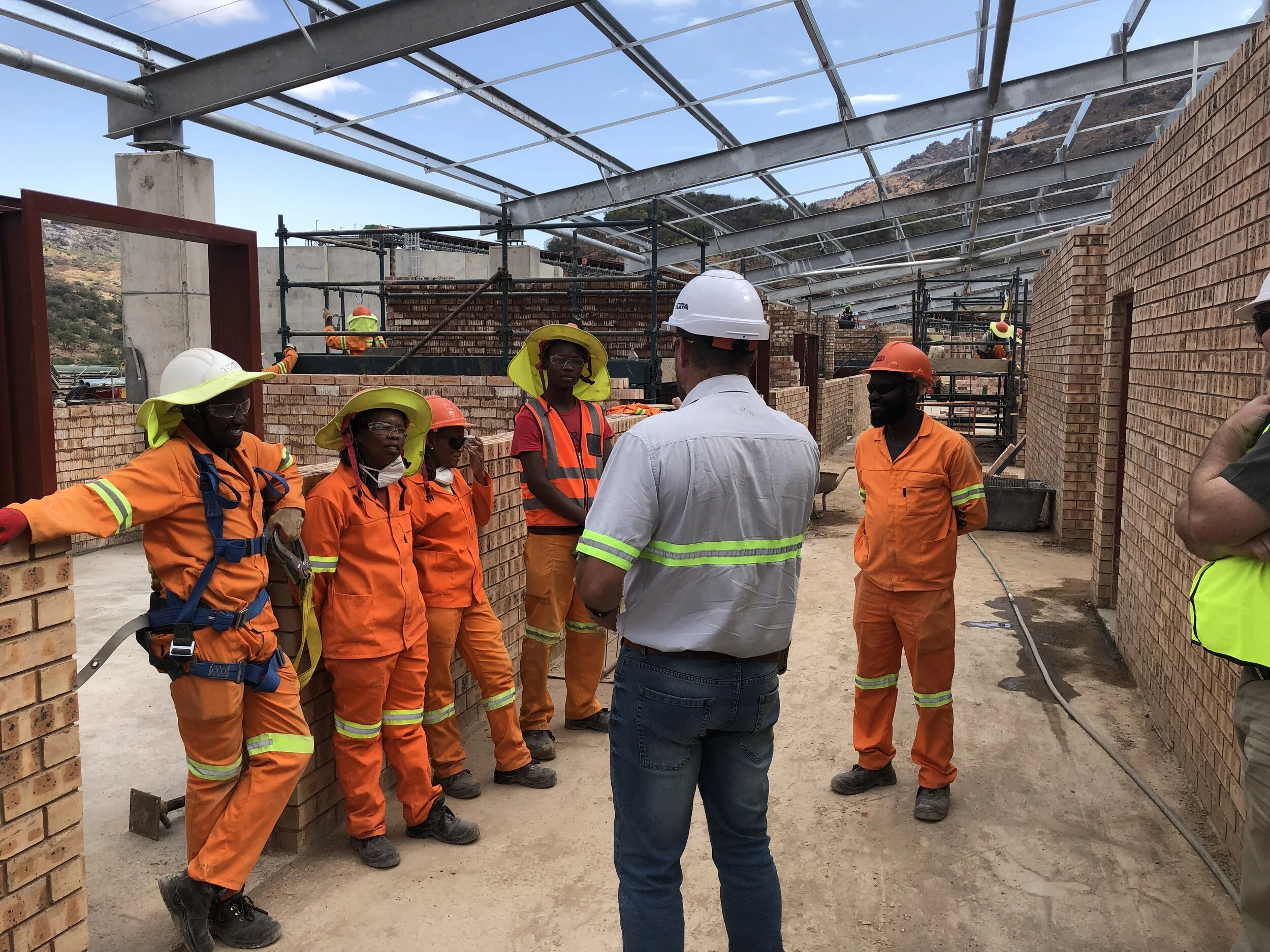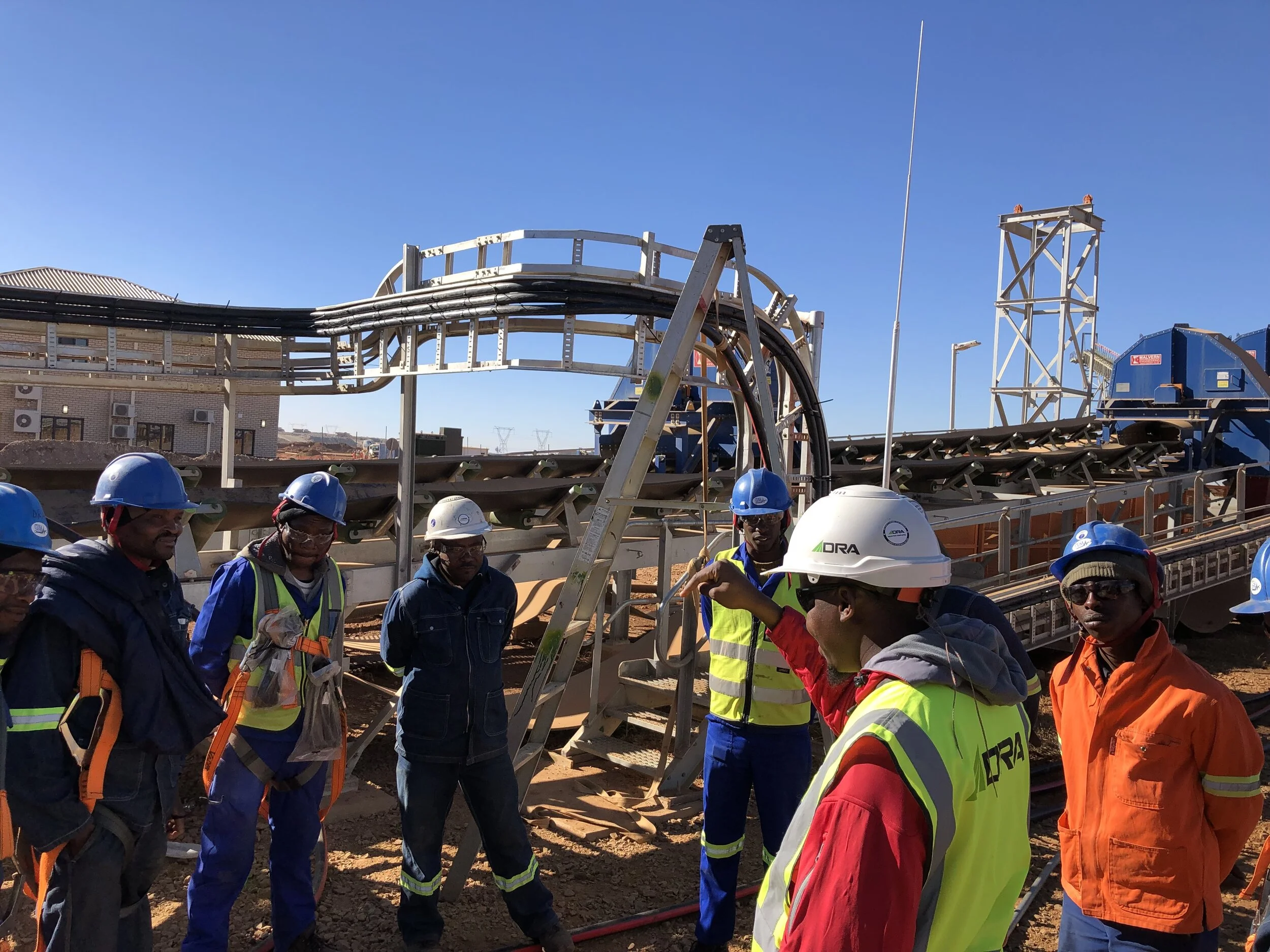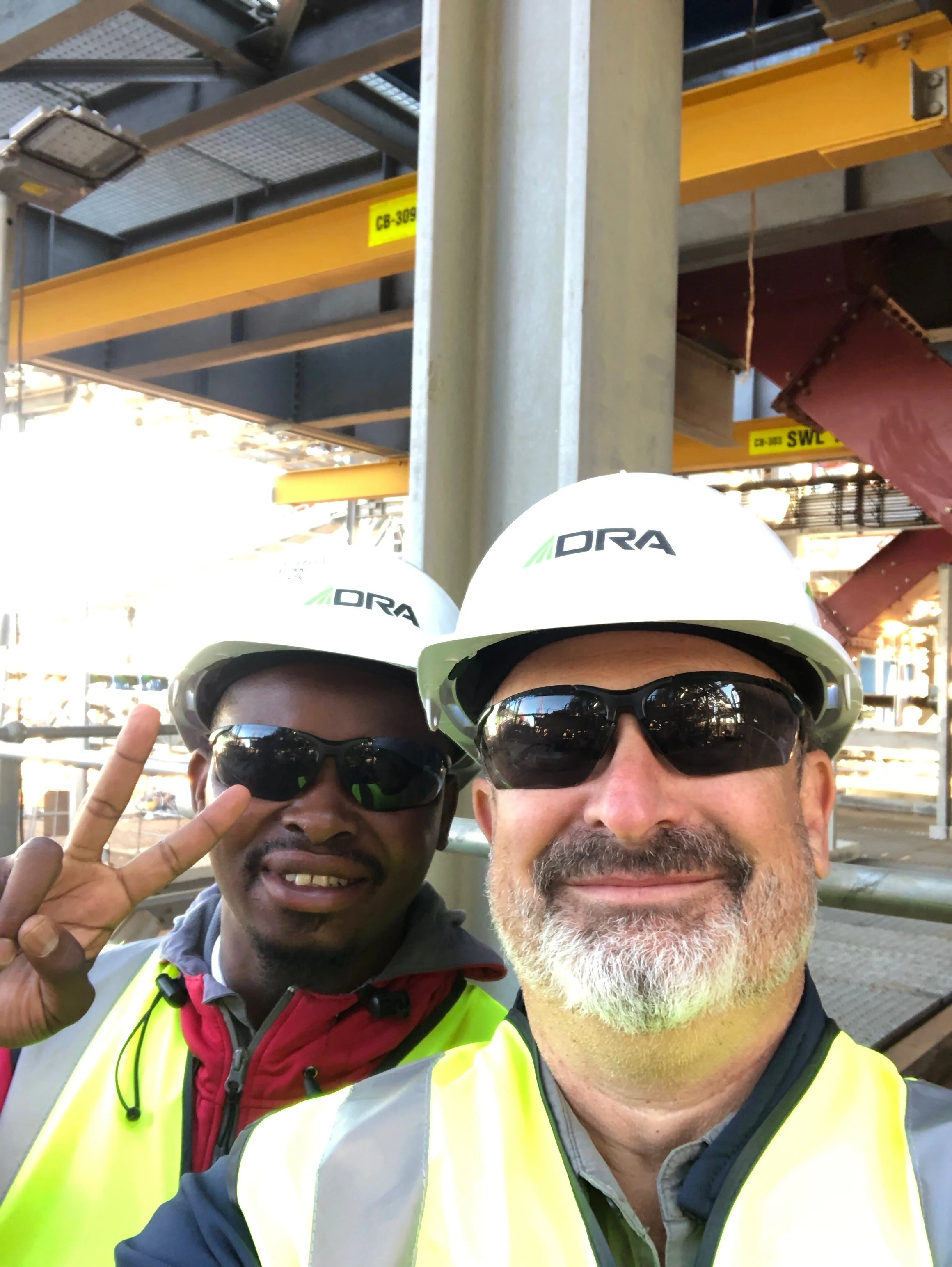T.H.A.N.K.S. for the Feedback
It occurred to me that the method Sam used to give behavioral feedback would help them discriminate the safe behaviors needed to avoid hazards… during the task… in the moment. Why? Because we were in the moment… and… he asked the right questions allowing them to make the discrimination.
Read the Full Essay
We had just witnessed a large toolbox talk at a mining construction site in Africa where a contractor was reviewing the hazards that may be present in the electrical tasks listed for the day. It wasn’t a bad session, the safety officers were loud and lively in their statements; there was some humor and the safety manager from the general contractor even stepped in to say a couple words.
But I wondered how this morning session would translate out in the field, where the work is done. Would the workers be able to discriminate the safe behaviors they need to avoid hazards… during the task… in the moment?
To find out, Sam and I walked the site, observing work and talking to workers out where risks are taken and where wisdom resides. I was teaching Sam how to be a behavioral coach. What I didn’t anticipate was it would be Sam who would be my teacher.
We came upon a group of 8 electrical contractors struggling to secure cabling at a turn in the conveyer being built. The two-inch cable bundles were cold that morning making the rubber hard to bend. Sam pointed out to me that there were three of them up on the conveyer (about four feet off the ground) all struggling to bend the bundle. Another had climbed up on top of the configuration above the cable to help. Only one of these workers had fall protection on and it was hanging to the ground. No ladder to be found.
Instead of jumping in right away Sam had us patiently observe for a couple moments. An interesting thing happened. The workers noticed our presence and the fact that we were sporting the logo of the general contractor on our *very clean* vest and hard hat. They spoke to each other quietly in their native tongue and then calmly climbed down and put on harnesses before proceeding back to their work.
It became apparent that they had no real experience with fall protection. They knew to clip in but three of them did it on the conveyer at their feet. Sam and I stayed quiet as they continued to chat amongst themselves, pointing at various points of the conveyer assembly and the harness. Eventually they all clipped onto the conveyer assembly at eye height but quickly discovered their straps were in the way of the cable bundles. Eventually, they clipped in at the top of the assembly and proceeded to successfully, and safely, wrestle the cables into place and tie them in.
Asking Questions Creates the Learning
Then Sam politely called the crew down to the ground in a circle. Sam knew that he, sporting the logo of the general contractor, could easily elicit anxiety in the work crew who would rightly be worried about being scolded and written up for their violations. Instead of diving into the problems he saw Sam did something miraculous … he asked questions.
He began by introducing himself and me in their native language with a smile. He asked his questions in English translating to their language immediately.
He asked them what task they were trying to complete.
They told him they were cabling electrical conduit to the conveyer.
He asked what hazards did they face doing the task.
They mentioned working at height, straining with the cable and sharp edges.
Then he asked what they were doing to stay safe.
They coyly pointed out that they were using their fall protection harnesses.
We had seen that they hadn’t initially used the harnesses and then struggled to find the right method when they did attempt to use the harnesses. Sam didn’t mention this, instead he said, “yeah, we saw that you figured out how to use the harnesses to protect yourself from falling… good job”. Then it was the workers who voluntarily described their struggles finding the appropriate place to clip in. Sam said he noticed this and we all had a bit of a chuckle.
Sam then asked if he could tell them what else he noticed. After getting permission, he proceeded to point out that they were jumping off the conveyer to get tools. Sam said he was concerned that the height of the jump and uneven ground could cause them to hurt a knee or ankle.
He also mentioned that a couple of the crew had climbed on the higher point of the conveyer assembly. He then asked what would be a better alternative … a solution for the risk. They were quick to point out that a ladder could be used. Sam told them “thank you” for their solutions then gave them a thumbs up and some fist pumps. A couple went to get ladders and a spirited crew re-engaged their task. Much more safely this time.
It occurred to me that the method Sam used to give behavioral feedback would help them discriminate the safe behaviors needed to avoid hazards… during the task… in the moment. Why? Because we were in the moment… and… he asked the right questions allowing them to make the discrimination. Sam had turned the work setting, the safety tools, and even the workers into what us behavior scientists call discriminate stimuli, a very powerful form of Antecedent. In the future as workers do a similar task, the antecedents of the conveyer height, fellow workers, and task will help them discriminate the behaviors that need to be engaged in to be safe.
Direction Leads to Compliance – When you are there
As Sam and I were debriefing, I praised Sam for executing an exemplar of behavioral coaching. Afterward, to make a contrast, I asked Sam if he noticed, when we first got to the electricians’ work site, that the general contractor’s project manager and construction manager walked right by this group of workers and failed to notice, much less engage these workers in a safety conversation. We decided right then that we had a mission to teach all managers and supervision behavioral coaching (because Sam cannot be everywhere).
We went to work and about 6 months later we cajoled a group of Project Managers out of their offices to a different construction site. I’m sure they would admit that they were a bit perplexed and perhaps perturbed that we dragged them to site. At least their body language was suggestive of this as we had our morning session in the modular meeting space.
We then took them out to the workers in a couple groups. I went out with Juan, one of Sam’s behavioral coaching colleagues. In my group we watched Juan conduct a feedback session much the same as Sam. Then, to their surprise, we asked the project managers to engage in their own behavioral feedback with another crew of workers. Here is how it went down:
Watch for 5 seconds
Jump in and tell workers what they are doing is wrong
Tell the workers the right way of doing the task
Awkward silence
After their initial attempt I asked the project managers with me if they think these workers would be able to discriminate the right behaviors the next time they do the task… when we are not around to tell them the proper way. They knew the answer was no.
One project manager even noted that they have been managing safety at their sites by relying on safety officers and front line supervisors to go around and dictate direction. They were not adequately teaching the workers how to discriminate the safe behaviors on their own the way Sam and Juan were.
The T.H.A.N.K.S. conversation
For the next hour or two we coached the coaches having them practice the T.H.A.N.K.S. conversation central to impactful behavioral coaching. I’ve designed this feedback process over the decades to:
Put workers at-ease so they are willing to openly discuss barriers to their safety;
Engage the worker to talk through a problem so solutions will continue into the future when they are back on task;
Identify the hazards that tell the worker “now’s a good time to engage in safe behaviors” so they become discriminate stimuli guiding them when supervision is not around;
Delivering Actively Caring through showing concern;
Reinforcing workers up front for the safe behaviors they are already doing and for the ideas they come up with in the conversation; and
Create a learning moment in less than 5 minutes.
So here it is:
T: Ask them about the TASK they are doing
H: Ask them about the HAZARDS associated with the task
A: Ask what ACTIONS they are doing to keep themselves safe
N: Tell them you NOTICED their safe actions but also some risk
K: Talk about how risks CONCERN you
S: SOLVE the problem
(yeah I know a C is not a K but work with me).
So, I dare you to go do some homework. Go out and try the T.H.A.N.K.S. conversation. It is not hard … but it is. You’ll have to inhibit your instincts to just jump in and solve the problem. You’ll have to inhibit your bias to tell them what they are doing wrong. You’ll have to exhibit your underlying concern for them as humans with lives and families. So, start today, struggle like the project managers, then practice, once a day until you nail it.
Then something miraculous will happen. You’ll find it reinforcing. You’ll enjoy the conversations and so will your people. And you’ll see results in their behaviors. (Plus, it is free and easy).





